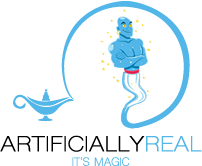10 Instore Retail Experiences to Ensure Customers Return
In an age where consumers can shop from anywhere, device in hand, it is the instore retail experience that will ensure a customer’s return (or not). No longer can a bricks and mortar retailer provide four walls filled with product and expect longevity. Offering an experience that customers will relate to is paramount in engaging their desire to return and shop.
With this in mind, here are 10 experiences that retailers can incorporate into bricks and mortar retail.
1.Customer Service
This is the most important experience a customer should expect. If you search online long enough, you will find your desired product less expensive than instore. However, the online experience doesn’t always accommodate the convenience of communication. Hence customer service becomes the key to communicating with potential customers.
Customer service is personal. Swiping and pressing keys is not. Face to face customer service also delivers reassurance, provides confidence or allows sales staff with expertise to qualify marketing puff.
When recruiting, an interview question I always ask is what an applicant’s favourite store is and why. The follow up question is what was the first thing they ever purchased? Most people genuinely won’t know. Most people will remember the experience long after they remember what product they purchased. For this reason, I ask my staff to treat every customer like it is the first time they have entered the store.
2. Photo Boards – Social Media

Branded Photo Boards with the face cut out or branded selfie frames create memories. Further, they provide the cheapest advertising available when customers begin sharing to social media.
Yes, they can be a bit cheesy. Though have you ever seen someone participating without smiling? It is a positive experience and one that people not only like doing together, but like to share with friends.
Imagine 1000’s of people having their picture taken with your branded photo board and sharing with their followers. Many commercial printers have the ability to customise photo boards.

This is an experience not available on line and one that delivers fringe benefits to the retailer.
3. Discovery
Discovery doesn’t need to be too complicated though it is most effective when foot traffic is established.
Discovery means selling goods that your customers don’t expect you to sell. As a result, when they ‘discover’ them in store you are changing their expectations. Discovery goods may appeal for a number of reasons. This includes, price, convenience, uniqueness or exclusivity.
Australian pharmacy group Chemist Warehouse are hitting the market harder with bulk buys. They have established a strong market for laundry detergent and fragrances as well as dishwashing detergent, air fresheners and even toilet paper. All are bought in bulk & sold at appealing prices to capture incremental sales from their customers.
Aldi Supermarkets are the masters of Discovery. Even Trademarking the term “Special Buys” to identify the weekly sales category promoted. As a supermarket, they invest heavily in categories outside the normal channel to attract customers. Ski apparel, motor cycle gear, cast iron cookware and electronics have all had success in attracting new customers and retaining existing customer.
4. Personalise – Myer Christmas Offers

In recent years, it doesn’t seem that Myer Department stores have done a lot right in terms of retail strategies. However, one concept that works is the personalisation of gifts. They have teamed up with big brands such as Cadbury, Toblerone and even Nutella to have a message or name printed on the product’s label.
In the main, these offers are instore only or click and collect ensuring the customer must visit the store to pick up or purchase.
When Myer launched the personalisation of the Nutella jar in 2015, it became their best-selling product that Christmas period. Fast forward four years and there are hundreds of offers including mugs, shirts, soft toys, backpacks, tools, serving boards, drink bottles etc.

As the concept has evolved, so too has the method of purchase with some lines only available online. As a result, Myer does not physically have to carry the stock, rather outsourcing the product and collecting a percentage of sales.
5. In-Store Demonstrations
Though the provision of online videos and Youtube may have some impact on in-store demonstrations, what online videos do not offer is the convenience of interaction. Videos do not always provide for practical usage or troubleshooting or misunderstanding instructions. In store demonstrations provide a firsthand experience that won’t be retrieved from the click of a key.
Peters of Kensington, a popular homewares retailer in Sydney host regular in-store demonstrations using cookware and appliances. Combine this with the attendance of celebrity chefs and they are turning people away. The impact is exponential. Not only do the feature products sell, however a spike in sales of utensils, napery, cookbooks and bakeware results.

Effective use of social media allows for inexpensive advertising. As a result, it will ensure demand for the next event.
The instore retail experience in this case can be self funding. Thereofre, it can be a valuable strategy to build into a business plan.
6. Technology
Instore technology has the biggest impact on the new generation of consumers. Many retailers are embracing it via customer service or as another experience instore.

Specsavers in the UK began a service in 2018 to simplify the customer’s choice of frame for their glasses. Frame Styler involves using iPads and imaging software to produce a 3D image of the customer’s face. The software then selects the style of glasses that best suits their face, age & gender. Through the iPad, customers can then choose and compare multiple styles in 3D, much quicker than trying them all on.
An interactive window was successfully used by fashion group Ted Baker in London in 2017. Customers would place their hands on stencils on the shop window, triggering a photograph of their face. The photograph was then used on social media or in advertising campaigns.

Virtual Reality is another experience that can be customised for a business. Roller Coasters, skiing, surfing, cycling and flying can all create a spectacular experience instore when virtual reality is integrated into the customer experience.

Technology can be used to enhance the shopping experience. It may not always result in an immediate sale. However what it can do is create critical mass attention. As a result, using it should always have a purpose which ultimately should be future sales opportunities.
7. Loss Leaders – In Store Only
Loss Leaders as a strategy are not new. Put simply, it means identifying numerous stock lines and selling them at discounted prices. This could be even below cost with the purpose of attracting customers to the store who may also purchase other goods from which a profit is derived.
Regularly, you will see advertising that is labelled “In-Store Only”. The purpose in most cases is that a loss leader is being employed to attract customers to the store. This strategy is less effective online since freight can often nullify the customer’s savings or from the retailer’s perspective, customers are less likely to browse the online store. As a result, there is less potential to derive incremental sales online rather than when a customer visits the store.
Such an instore retail experience can be tailored to those that visit the store. As a result, it becomes a more attractive option to visit the bricks and mortar store.
8. Try Before you Buy
Like Loss Leaders, the concept of try before you buy is not new. Even now the concept is not exclusive to instore as more and more online retailers are offering the concept.
For years, liquor stores have offered wine tastings to customers in store. Similarly, fashion retailers allow customers to try on clothes and shoes, while motor vehicle retailers encourage test drives. While the concept is not new, it is a concept that helps deliver piece of mind.
Some online fashion retailers including Amazon Prime and Topshop in the UK allow customers to order fashion lines and decide whether to keep them before paying. A finite time period in which to return the product before the customer is charged applies.
Despite this, bricks and mortar retailers should continue the try before you buy strategy where possible. The strategy provides convenience for customers. It delivers piece of mind and comfort. If nothing else, failure to promote it means directing your customers to someone who will.

Some larger retailers should be embracing and using it more effectively. Imagine going into a Rebel sports store and using a cricket bat, tennis racquet or golf club to assess whether you like a product? Similarly, trying on some running shoes and taking to a treadmill? It is these experiences that will promote longevity in a business.
9. Theatre
Theatre is one of the critical components for delivering a memorable in-store retail experience. Theming a store including personnel, can provide levity for the customer. Having staff dress in character to coordinate with instore merchandising can be a fun way to engage. It is both disarming and amusing.
Utilising music and screens to engage customers is also an imperative way to provide a positive and memorable experience. The provision of such theatre consistently, gives customers a reason to revisit your store each time they enter a shopping centre.
Ensuring the theatre is relatable to the demograph is also important. Enter a Glue store and you are immersed with current pop music (somewhat louder) that is targeted to appeal to the youth market. Playing the same style of music in David Jones will detract from the brand and the style of customer.
10. Community
Many stores are having success with creating a culture of Community in store. Sportswear stores such as Nike have running clubs. Further, downloading a Nike Running Club app allows you to compare your progress against other like-minded runners.

Bunnings regularly run “How to….” DIY Programs where an experienced staff member teaches customers how to undertake works without paying a tradie.
Eden Gardens, a nursery with footprints in Sydney and Brisbane, run workshops on a range of topics including native plants, vegetable gardens and water-smart gardens. Note, not all the workshops are free.

All are designed to bring customers to the store. The instore retail experience should be designed in a way that the customer cannot benefit, unless they visit the bricks and mortar store.
These events add value to the community. They attract like-minded individuals and create an environment of information sharing which enhances the overall experience.
The Instore Retail Experience
In recent years, we have seen a plethora of retailers lose their footprint in Australia’s retail landscape. Many have failed to evolve and change the style of business that made them successful. Which raises the question, why do they need to change if what they have been doing has made them successful?
The reason they need to change is that the customer’s expectations are changing. Customers are better equipped with technology and therefore information than ever before. Similarly, they can shop from anywhere. As a result, if retailers don’t create a differentiated offer, they will compete on price alone and there is no longevity in that.
The simplest way to differentiate is to offer an experience. Whether the experience is promoting pre-existing strategies or embracing those around technology, the benefits involved with offering an instore experience add another layer of differentiation from online retailers.
What Alternatives do you Have?
If you have an instore retail experience that works for you or have some feedback on some of those I have identified, I’d love to hear from you. Feel free to add a comment or ask a question below.

